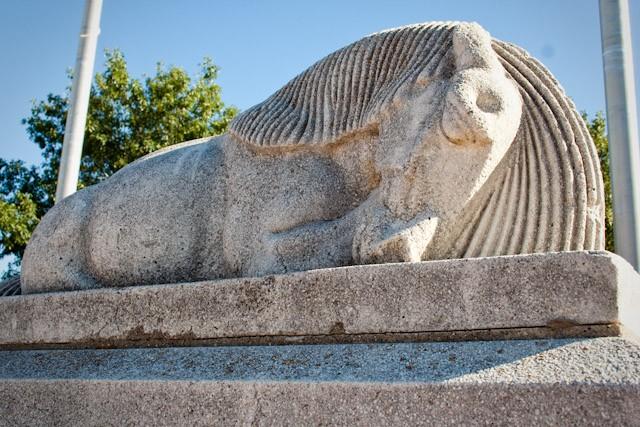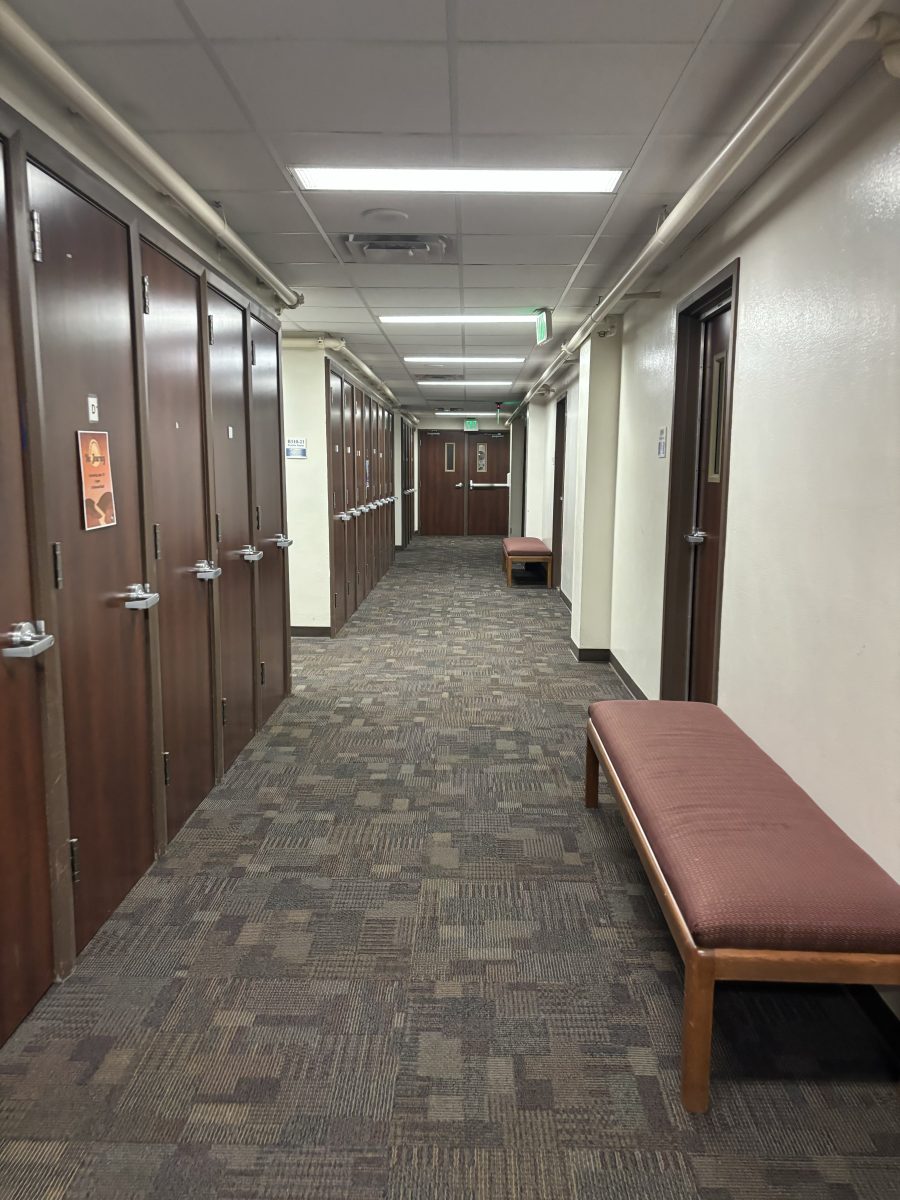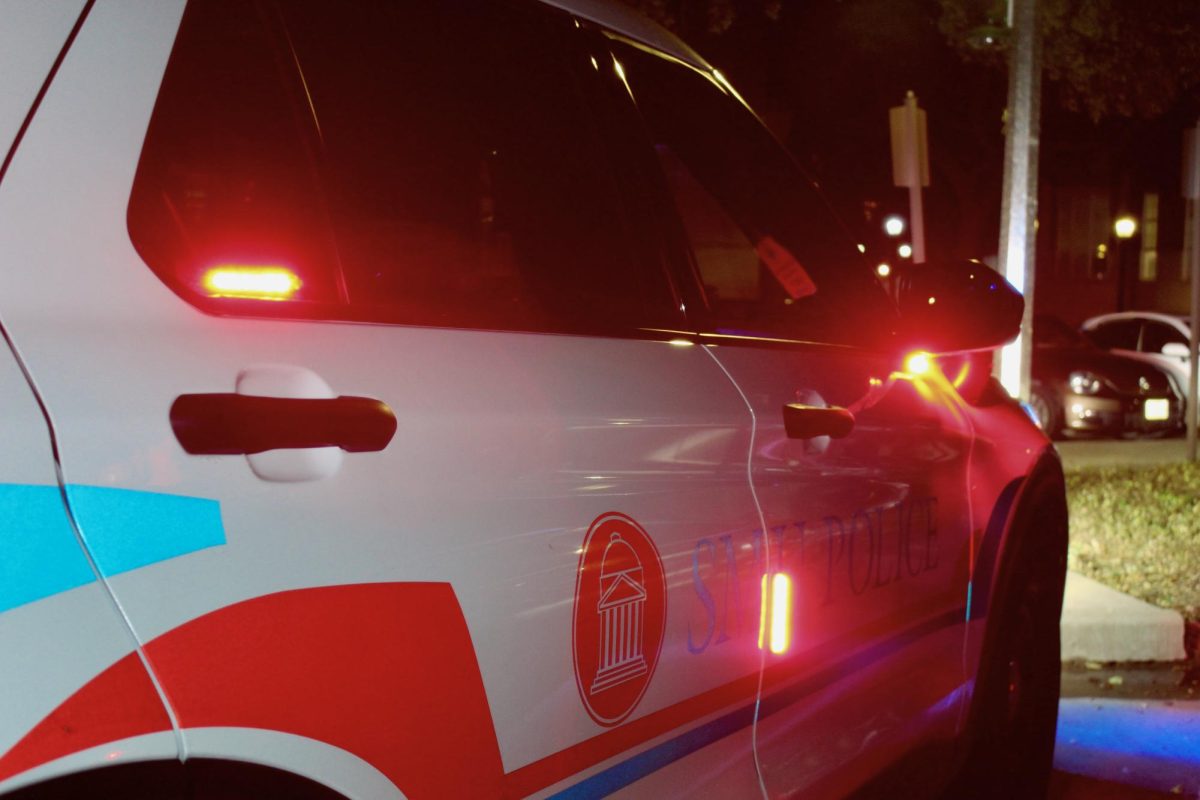
The burial site of Peruna I is located at Peruna Plaza at the south end of Ford Stadium. Peruna I is commerated by the statue picture above, sculpted by Michael G. Owen Jr., class of 1937. (KALEN SCHOU/ The Daily Campus)
Everyone knows and loves our cherished mascot, Peruna, the Shetland pony. We see him at every home football game, convocation, graduation and other special events around campus. Many, however, are unaware of Peruna’s rich history.
During SMU’s early years, the mascot was unofficially called the “Parsons,” but that changed in 1917 when the SMU student body voted to become the “Mustangs.”
Later in 1932, Cy Barkus, a 1929 Perkins School graduate said, “I was out on a picnic and saw a little black horse running through the high weeds and I said, ‘That would make a good mascot for SMU.’ So I went to Coach Ray Morrison and said, ‘Ray, I’ve found a horse that I think would make a good mascot,’ and he told me to bring it to the pep meeting. So I got a popular [student] to bring the pony to the pep rally, and from then on, it became the official school mascot.”
When Peruna first started appearing at events with the Mustang Band, he was called “the midget wonder horse” on the program.
Peruna’s name comes from a popular drug in the 1920s known as Peruna Tonic, which was 18 percent alcohol. During Prohibition, the tonic was used as an easily accessible, albeit questionably legal, substitute for traditional spirits, hence, the double entendre of our “spirited” mascot.
Some of Peruna’s more “spirited” moments include trying to mount Texas Tech’s horse, Misty, pooping mid-field on TCU’s brand new turf, kicking UT’s Bevo and killing Fordham University’s Ram with a kick to the head.
Peruna I passed away tragically after being hit by a car on Mockingbird Lane on Halloween in 1934 just after his return from New York City. Peruna was buried at the old Ownby stadium. A statue crafted by Michael Owen, Jr. (’37) was placed at Peruna’s burial site and now stands at Peruna Plaza outside Ford Stadium.
Peruna II was supplied by W.E. Culwell, of Culwell and Sons on Hillcrest and thus began a long tradition between the Culwell Family and SMU. Culwell’s generosity continued until his death in 1964, and his family continues the tradition today. Peruna lived on campus at first and was cared for by an organization called “The Saddle Burrs,” but incidents on campus, like Peruna spending the night in sorority houses, drove Peruna out to the Culwell ranch in Grapevine. Peruna’s current home is kept private, for security.
Peruna VIII, our current mascot, is the first Peruna to serve at the new Gerald J. Ford Stadium. He famously began his career in 1997 by tripping and dragging his handlers at the Cotton Bowl. He is perhaps more famously known for leading the Mustang Band in President George W. Bush’s inauguration parade in 2001.
Peruna can be seen during home football games running from end-zone to end-zone at the end of each quarter and the half.
He used to run after each touchdown, much like the University of Oklahoma’s Sooner Schooner, but a change of conference and new rules put that practice to an end in 1996.










